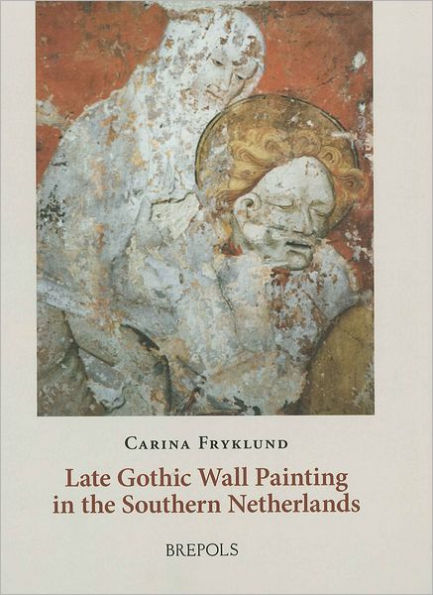Flemish Wall Painting: Late Gothic Wall Painting in the Southern Netherlands
The present book considers the development of figurative wall painting in the southern Low Countries over a period of two centuries, between circa 1300 and 1500. The region had a long-standing tradition of monumental figurative painting, of which the earliest, romanesque, examples are still preserved at Tournai and Ghent. Despite the central role that figurative wall painting clearly continued to play in the art, propaganda, and liturgy of the courts and churches of the late medieval southern Low Countries, the medium has been largely overlooked in comparison with the attention paid by art historians to other contemporary art forms. A variety of factors have contributed to this neglect, of which the most significant are undoubtedly the random survival, and the often damaged condition, of extant wall paintings, as well as the frequently remote locations and difficulty of access to the buildings housing them. Benign neglect and active vandalism have ensured that only a fraction of the great wall painting ensembles of the late medieval era have survived. Today, only fifty or so individual murals or ensembles of the Late Gothic period -not including a large number of tomb paintings -once in the churches and monasteries, town halls and guild chapels, castles and hotels of the southern Low Countries, have survived the passage of time, wars, iconoclasm, and changing fashions of interior decoration. These include many previously unrecorded wall paintings discovered beneath layers of whitewash in churches and private residences within the last twenty-five years or so, and restored by conservation staff.
1113878268
Flemish Wall Painting: Late Gothic Wall Painting in the Southern Netherlands
The present book considers the development of figurative wall painting in the southern Low Countries over a period of two centuries, between circa 1300 and 1500. The region had a long-standing tradition of monumental figurative painting, of which the earliest, romanesque, examples are still preserved at Tournai and Ghent. Despite the central role that figurative wall painting clearly continued to play in the art, propaganda, and liturgy of the courts and churches of the late medieval southern Low Countries, the medium has been largely overlooked in comparison with the attention paid by art historians to other contemporary art forms. A variety of factors have contributed to this neglect, of which the most significant are undoubtedly the random survival, and the often damaged condition, of extant wall paintings, as well as the frequently remote locations and difficulty of access to the buildings housing them. Benign neglect and active vandalism have ensured that only a fraction of the great wall painting ensembles of the late medieval era have survived. Today, only fifty or so individual murals or ensembles of the Late Gothic period -not including a large number of tomb paintings -once in the churches and monasteries, town halls and guild chapels, castles and hotels of the southern Low Countries, have survived the passage of time, wars, iconoclasm, and changing fashions of interior decoration. These include many previously unrecorded wall paintings discovered beneath layers of whitewash in churches and private residences within the last twenty-five years or so, and restored by conservation staff.
139.0
Out Of Stock
5
1

Flemish Wall Painting: Late Gothic Wall Painting in the Southern Netherlands
435
Flemish Wall Painting: Late Gothic Wall Painting in the Southern Netherlands
435
139.0
Out Of Stock

Product Details
| ISBN-13: | 9782503512372 |
|---|---|
| Publisher: | Brepols Publishers |
| Publication date: | 12/16/2011 |
| Series: | Art History (Outside a Series) Series |
| Pages: | 435 |
| Product dimensions: | 8.96(w) x 11.31(h) x 1.31(d) |
About the Author
From the B&N Reads Blog
